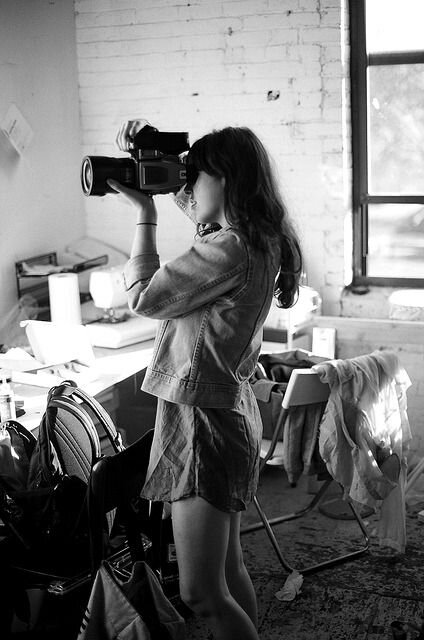I’ve always been interested in fashion. I collected Vogue magazines as a teen, The Devil Wears Prada was my favourite movie, and I religiously watched runway shows every season to see what the next big trends would be. I became interested in sustainable and ethical fashion in the mid 2010s when I was at university, and I even started my first fashion blog (the blog no longer exists but here’s an interview about it at the time). As an adult I realised that if I care about the environment, workers rights, and animal welfare, I cannot in good conscience continue to participate in fast fashion.
Seeing as I recently became an ambassador for Remake, a non-profit community advocating for change in the fashion industry, I thought it was about time I did some deeper learning about the fashion industry and ethically sustainable fashion as whole. So, I took a Sustainable Fashion course from Copenhagen Business School, I read as many resources as I could find, and I wanted to share a little of what I learned.
WHy ISN’t all fashion sustainable?
The fashion industry is one of the most profitable industries in the world (worth an estimated US$2.5 trillion), but it’s also one of the most polluting and exploitative. Economic growth is considered the most important aspect, and as a demand increases for cheaper and cheaper clothes, companies have to continue to cut their costs in order to maintain and grow their profits. Cutting costs often means cutting corners, and so products are made at the expense of the farmers, factory workers, and natural resources. With seasonal collections being the current system under which most fashion companies operate, they are required to produce large quantities of new clothing every 3 months, encouraging their customers to constantly be updating their wardrobe with the latest collection to fit the latest trends. Consumers receive the end product, the garment, focusing on how it looks, how it fits/feels, and how much it costs, but forgetting that there is a long process that goes into making the product and at each step along the way there is the possibility of exploitation. (Watch this for information about the supply process for jeans as an example.)
The raw materials have to be sourced and processed as cheaply as possible, meaning crops need to be grown, animals need to be sheared, skinned, plucked or boiled, and farm workers need to work, as quickly as possible for as little money as possible. This leads to low wages, poor working conditions, and little to no concern for animal welfare. When it comes to the construction of garments, some companies use factories in their own country but the majority (at least 40 million) are in Asia, as wages are lower and there are less strict worker and human rights laws and regulations to adhere to. Garment factory workers are among the lowest paid workers in the world, they are often women or immigrants, working in unsafe conditions for an inhumane number of hours at a time. Even in the UK, companies such as Boohoo have been accused of modern slavery due to the working conditions of their garment factories. (See this article for more information on slavery in the fashion industry.)
Fast fashion is also extremely wasteful and harmful for the environment. Around 82 million metric tons of green house gas emissions comes from textile and leather production, it takes the equivalent of 2 years worth of drinking water (450 litres) to make just one t-shirt, and clothing made from non-biodegradable fabrics will sit in landfills for 200 years or more. In the end, customers wear the garment a number of times and then discard it, either because it goes out of style, no longer fits, or it becomes damaged, adding to the huge amount of textile waste that already pollutes the environment. (Read this white paper from Fashion Revolution, or check out Remade for more facts about the social and environmental damage from the fashion industry.)
GREENWASHING
With incidents such as the Rana Plaza making headlines, and climate change becoming a bigger and bigger concern, sustainability and “eco-friendliness” has become a hot topic in society, forcing brands to address their role, or face criticism. In recent years you’ll see fast fashion brands talk about being ethical, and many have even made attempts to project the idea of sustainability in their product lines (H&M’s Conscious Collection, and ASOS’s Responsible Edit for example) but when their supply chains and business practices are investigated further, it is revealed that they continue to participate in textile waste, labour abuse, and marketing that encourages overconsumption. This is often referred to as “greenwashing”: using “sustainability” as a marketing tool, but not actually meeting the necessary standards. As most fast fashion companies rely on a seasonal model, aim for continual growth, and focus on increasing profit, it would be an oxymoron for them to be labelled sustainable, as sustainability at it’s core aims to reduce overall consumption, not increase it.
WHAT MAKES A BRAND “ETHICALLY SUSTAINABLE”?
Ethical sustainability is most commonly measured by the companies overall social and environmental impact. This includes workers across the supply chain, such as not using child or forced labour, ensuring worker safety, freedom of association, gender equality and payment of a living wage. It also includes resource use and waste management, energy use and carbon emissions, water usage and pollution. And finally the use of animal products and its animal welfare policies. Sometimes it will also involve looking at the companies standpoint and participation in social and political movements. The most sustainable brands are those who include as many ethical business practices in their company as possible, and continue to try to find ways to improve or help the situation.
HOW CAN I MAKE MORE SUSTAINABLE CHOICES?
The main words to remember are: reduce, re-wear, repair, recycle, and resell. The single biggest thing we can all do is buy less, buy only what we need when we need it. The second thing would be to buy second-hand when possible, as this means no new clothes were produced to fulfil your need, and it saves a garment from landfill. Local thrift stores or charity shops are an option for some, online second-hand sellers are also becoming more popular and accessible too. As trends tend to be cyclical, you’ll often find vintage styles returning to the mainstream, this is where second-hand shopping can be very helpful. For those who can afford it, investing in good-quality long-lasting pieces from ethically sustainable brands and small businesses instead of fast fashion companies, or “voting with your dollar” as it is sometimes called, helps support sustain able fashion and move the market in that direction. However, this involves moving away from seasonal trends and choosing to dress in timeless/classic pieces or creating a strong personal style, as the aim is to keep and wear the items for as long as you can. Where possible, repairing or altering clothes you already have reduces waste, and recycling, repurposing, or donating/selling things you know you will never wear again would be the final step in helping work towards a circular economy.
To find out how ethical your favourite brands are, or find more sustainable alternatives, check out Good On You. For more resources and information I highly recommend Conscious Style, who also have a podcast where they cover many different topics related to sustainability and fashion.
Now, I want to put a disclaimer saying that I AM NOT PERFECT! This method is not going to be perfect! There is no way for me to be 100% sustainable and have zero negative impact, the majority of us will never be able to achieve that goal for as long as we have to exist in modern, capitalist society. However, my goal with this, as with all things, is to do my best and do as little harm as is practicable and possible in each situation. I never seek to shame or criticize other people for their choices or lifestyle as I don’t know anyone’s personal circumstances, and I know there’s a million reasons why something may or may not be possible for each person. I just try to share my personal experience or things that I’m learning in the hope that someone might find it interesting, or relatable, or useful.











